Whey protein isolate WPI: what it is, when to take it, is it worth it
Protein supplements are an important supplement for the athlete. Find out what is protein isolate, soy protein isolate and beef protein isolate, which is better isolate or concentrate.


Learn more about our editorial process
.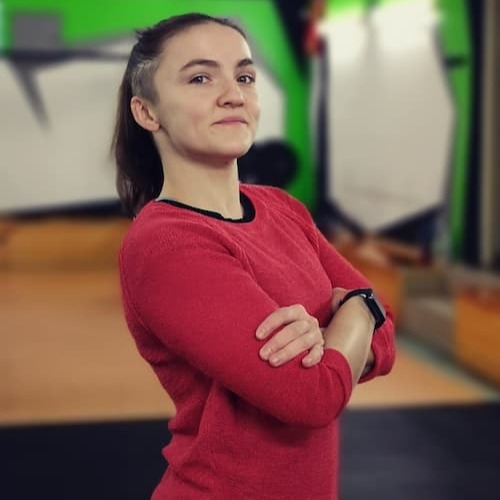

Learn more about our editorial process
.

Learn more about our editorial process
.

Learn more about our editorial process
.
Why you can trust us
Articles on Natu.Care are written based on scientific research, data from government websites and other reliable sources. The texts are written in cooperation with doctors, nutritionists and other health and beauty experts. Articles are reviewed before publication and during significant updates.
.Learn more about our editorial process
.Information about advertisements
Content on Natu.Care may contain links to products from the sale of which we may receive a commission. When creating content, we adhere to high editorial standards and take care to be objective about the products discussed. The presence of affiliate links is not dictated by our partners, and we select the products we review ourselves completely independently.
.Learn more about our terms and Conditions
.WPI is a good compromise when you're overdone with chicken and rice, and you want to deliver protein in a good portion and at a good price. It has more protein than concentrate and is cheaper than hydrolysate.
And interesting flavours to choose from... Salted caramel, mascarpone, artisan ice cream... Nothing, just buy!
.But surely isolate is better than concentrate and maybe it's better to pay extra for hydrolysate? Together with nutritionist and trainer Marta Kaczorek, we'll help you decide, especially if you have a protein baptism ahead.
And if you're not sure, it's a good idea.
From this article you will learn:
.- What a protein isolate (WPI) is. .
- How it is formed and what properties it has. .
- Why you need protein in your diet.
- Why you need protein in your diet.
- For whom WPI will be ideal. .
- How to incorporate WPI into your meals when you've outgrown your shakes.
- How to use WPI in your diet.
See also:
- Whey protein concentrate (WPC) .
- Whey protein hydrolysate (WPH) .
- Vegetable protein
- Casein
- Creatine
- BCAA
- Citrulline
Protein in the body
.Protein (proteins) is an organic compound that is made up of many amino acids and has a key building function in the body. It shapes connective tissue, bones, teeth, hair and nails. And of course - musclesand.
.Adequate protein influences proper muscle development and regeneration of damaged tissues..
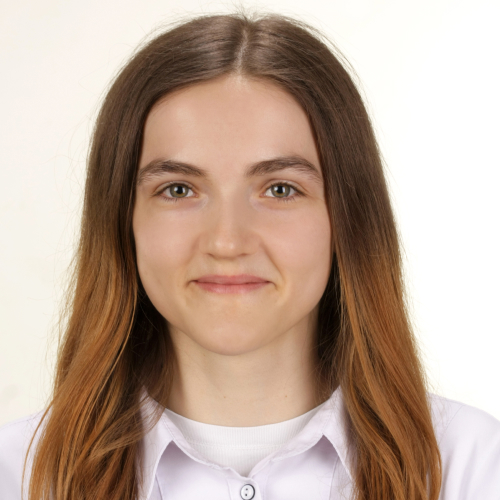 .
.
Marta Kaczorek clinical nutritionist and personal trainer
Additionally, proteinsand:
- as enzymes and hormones regulate metabolism, .
- they have a transport function (e.g. carry nutrients), .
- form antibodies that are responsible for defending the body against microbial activity, .
- are involved in maintaining the acid-alkaline balance of the body,
- are involved in maintaining the acid-base balance of the body.
- are involved in the regulation of physiological processes (e.g. in signal transduction). .
Protein makes up 20% of human mass and is one of the three most important macronutrients in the diet, along with carbohydrates and fats. Everyone needs protein - the average normal-weight adult should consume 0.8-1 g protein per kilogram of body weightand.
Physically active people need more protein, up to 1.6-2.2 g per kilogram of body weight..
 .
.
Marta Kaczorekclinical nutritionist and personal trainer
I train a lot - the gym is my second home. Protein? I love chicken in every way, and I can cut into cottage cheese every day. I have no problem hitting protein.
But many of my active friends do.
.And for anyone who isn't able or can't get enough protein from their diet, whey protein protein comes to the rescue.
Whey protein - what is it?
.Whey protein is a mixture of proteins isolated from whey (the liquid part of milk), which is separated during cheese production. Whey proteins make up about 20% of the protein content of milk (the other 80% is casein), and their total content in all milk is about 0.7%and.
Protein curd is a by-product that is produced during the production of hard, semi-hard, soft and cottage cheeses, among others - it is the liquid formed after the curdling of cow's milk..
 .
.
Marta Kaczorekclinical nutritionist and personal trainer
Types of whey protein
.Among the types of whey protein preparations, three are most important: concentrates, isolates and hydrolysatesand.
- Whey protein concentrate (WPC) - products containing between 30 and 85% protein.
- Whey protein isolates (WPI) - products containing 90-95% protein.
- Whey protein hydrolysates (WPH) - - products with approximately 90-100% protein.
Whey proteins vary in processing, protein, fat and carbohydrate content, as well as in price..

Marta Kaczorek clinical nutritionist and personal trainer
According to research, whey stimulates muscle mass formation to a greater extent than other protein sources - plant, casein or beefand.
Whey protein isolate is a common choice among amateur and professional athletes due to its high protein content and rapid absorption. Let's take a look at whether it is rightly so.
.ALLDEYNN WHEYROSE
Product description
Protein supplement containing whey protein concentrate (WPC) with added digestive enzymesós. It digests well, is an easy and quick way to provide protein and can be consumed by people with lactose intolerance. It will work well not only as a stand-alone drinkóy but also as a tasty addition to shakesóy, dessertsóy, oatmeal or omeletóy.
WHEYROSE contains five digestive enzymes that help break down macromolecules into smaller components, so that the ingredients from food and the nutrient are absorbed even better. This minimises or even eliminates digestive discomfort. Such an addition is rare in protein supplements.
.Pros and cons
Protein supplement containing whey protein concentrate (WPC) with added digestive enzymesós. It digests well, is an easy and quick way to provide protein and can be consumed by people with lactose intolerance. It will work well not only as a stand-alone drinkóy but also as a tasty addition to shakesóy, dessertsóy, oatmeal or omeletóy.
WHEYROSE contains five digestive enzymes that help break down macromolecules into smaller components, so that the ingredients from food and the nutrient are absorbed even better. This minimises or even eliminates digestive discomfort. Such an addition is rare in protein supplements.
.Additional information
Protein supplement containing whey protein concentrate (WPC) with added digestive enzymesós. It digests well, is an easy and quick way to provide protein and can be consumed by people with lactose intolerance. It will work well not only as a stand-alone drinkóy but also as a tasty addition to shakesóy, dessertsóy, oatmeal or omeletóy.
WHEYROSE contains five digestive enzymes that help break down macromolecules into smaller components, so that the ingredients from food and the nutrient are absorbed even better. This minimises or even eliminates digestive discomfort. Such an addition is rare in protein supplements.
.User review
Protein supplement containing whey protein concentrate (WPC) with added digestive enzymesós. It digests well, is an easy and quick way to provide protein and can be consumed by people with lactose intolerance. It will work well not only as a stand-alone drinkóy but also as a tasty addition to shakesóy, dessertsóy, oatmeal or omeletóy.
WHEYROSE contains five digestive enzymes that help break down macromolecules into smaller components, so that the ingredients from food and the nutrient are absorbed even better. This minimises or even eliminates digestive discomfort. Such an addition is rare in protein supplements.
.ALLDEYNN VEGEROSE
Product description
A protein supplement made from five plant proteins enriched with acacia fibre, flaxseed, MCT oil and the probiotic-prebiotic complex LactoWise®. It is a synbiotic thatós stimulates the developmentóy and growth of beneficial bacteria in the gastrointestinal tract and shows a beneficial effect on the condition of the digestive system.
Pros and cons
A protein supplement made from five plant proteins enriched with acacia fibre, flaxseed, MCT oil and the probiotic-prebiotic complex LactoWise®. It is a synbiotic thatós stimulates the developmentóy and growth of beneficial bacteria in the gastrointestinal tract and shows a beneficial effect on the condition of the digestive system.
Additional information
A protein supplement made from five plant proteins enriched with acacia fibre, flaxseed, MCT oil and the probiotic-prebiotic complex LactoWise®. It is a synbiotic thatós stimulates the developmentóy and growth of beneficial bacteria in the gastrointestinal tract and shows a beneficial effect on the condition of the digestive system.
Expert opinion
A protein supplement made from five plant proteins enriched with acacia fibre, flaxseed, MCT oil and the probiotic-prebiotic complex LactoWise®. It is a synbiotic thatós stimulates the developmentóy and growth of beneficial bacteria in the gastrointestinal tract and shows a beneficial effect on the condition of the digestive system.
ALLDEYNN VEGEROSE
Product description
A protein supplement made from five plant proteins enriched with acacia fibre, flaxseed, MCT oil and the probiotic-prebiotic complex LactoWise®. It is a synbiotic thatós stimulates the developmentóy and growth of beneficial bacteria in the gastrointestinal tract and shows a beneficial effect on the condition of the digestive system.
Pros and cons
A protein supplement made from five plant proteins enriched with acacia fibre, flaxseed, MCT oil and the probiotic-prebiotic complex LactoWise®. It is a synbiotic thatós stimulates the developmentóy and growth of beneficial bacteria in the gastrointestinal tract and shows a beneficial effect on the condition of the digestive system.
Additional information
A protein supplement made from five plant proteins enriched with acacia fibre, flaxseed, MCT oil and the probiotic-prebiotic complex LactoWise®. It is a synbiotic thatós stimulates the developmentóy and growth of beneficial bacteria in the gastrointestinal tract and shows a beneficial effect on the condition of the digestive system.
Expert opinion
A protein supplement made from five plant proteins enriched with acacia fibre, flaxseed, MCT oil and the probiotic-prebiotic complex LactoWise®. It is a synbiotic thatós stimulates the developmentóy and growth of beneficial bacteria in the gastrointestinal tract and shows a beneficial effect on the condition of the digestive system.
Whey protein isolate
.Whey protein isolate (WPI) ( Whey Protein Isolate) is a form of whey protein obtained by microfiltration. It contains 90-95% concentrated protein, 0-3% carbohydrates, 1-3% fats per 100 g dry weight. Isolate is rapidly absorbed and has a short absorption period of 30-60 minutesand.
Pure whey protein isolate is a nutrient not only for people who want to add protein to their diet to build muscle mass, but also for those on a reduction who need to increase meal satiety and speed up metabolism.
How is protein isolate made?
.The process of producing WPI is divided into several stages:
.- The milk is heated to separate the whey protein from the casein.
- The whey is heated to separate the whey protein from the casein.
- Whey is subjected to microfiltration or ultrafiltration, during which the proteins are separated from the other components of the milk through microscopic pore filters.
- The final step is the separation of the whey proteins from the casein.
- The final step is to dehydrate the whey protein isolate, making it more concentrated and having a higher protein content per 100g of product.
In this form, the isolate is ready for consumption or further processing (e.g. adding flavours, aromas).
Protein isolate - what does it give you?
.WPI proteinand:
- quickly and effectively replenishes protein in the diet, .
- supports the building of muscle mass, .
- supports post-workout recovery, .
- increases the thermogenic effect of food (raises metabolism), .
- transports nutrients, .
- reduces muscle loss during a reduction diet, .
- increases satiety after a meal, .
- influences the regulation of hormones, enzymes and antibodies, .
- improves nitrogen balance by providing the body with more amino acids, .
A positive nitrogen balance is particularly desirable for strength training and muscle building. Providing adequate protein allows for muscle recovery, minimising muscle protein breakdown and promoting muscle growth.
 .
.
Marta Kaczorek clinical nutritionist and personal trainer
Gym survey
.A 2016 meta-analysis found that in 192 strength-trained individuals, taking whey protein (WPI and WPC) increased muscle mass and strength. Interestingly, the effects are even more apparent and noticeable when subjects use creatineand.
Benefits of WPI
.- High protein content per 100g (90-95%). .
- Contains usually all essential amino acids (must be provided with diet).
- Low carbohydrate content.
- Low in carbohydrates, fats and kcal per 100 g. .
- Contains no lactose or only traces of lactose (depends on the manufacturer) .
- Fastly absorbed into the body.
- Fast absorption.
- Digests well. .
- Ideal after training for a quick protein replenishment. .
Many people choose WPI for its speed of absorption and target the so-called anabolic window. In theory, this is the time after a workout (30 minutes) when the body is more able to absorb and use protein, among other things, to rebuild and grow muscleand.
In practice, researchers suggest that the fat anabolic window does not exist . After a workout, you don't need to do cardio by running to the locker room for a WPI shake. Just try to make sure your post-workout meal (up to 4 hours) contains 0.4g/kg body weight of protein.
Disadvantages of WPI
.- High price (from around £10/100g). .
- Because of the intensive purification process, some people find the taste or texture less pleasant (a matter of taste). .
- Not suitable for baking (e.g. for cakes). .
- Manufacturers often add artificial sweeteners. .
Before you buy a 5 kg Belgian chocolate-flavoured protein, read the ingredients carefully. Flavoured proteins often contain artificial sweeteners (e.g. acesulfame K, sucralose) which, when chronically and excessively consumed (and they are present in many products), can adversely affect healthand
It's worth choosing whey protein isolate flavourless or sweetened with stevia or erythritol.
What's better - isolate or concentrate?
.Protein isolate may be a better choice because, compared to concentrate, it has more protein (up to 90%) and fewer kcal per 100g. Furthermore, it contains less lactose and may be better tolerated by people with stomach problems.
Concentrate will have an advantage when you want to be satiated for longer (WPC takes longer to digest), don't want a very high protein portion in your meal and want to save money because you don't know if protein powder overall is your bagel.
It's a never-ending discussion team WPI versus team WPC... But I'll leave you to choose - below is a comparison of the two proteins.
|
Type |
White protein isolate (WPI) . |
White protein concentrate (WPC) |
|
|
Protein content per 100 g of dry weight |
90-95% |
30-85% |
|
|
Ease of digestion |
Very good |
Good |
|
|
Digestion time |
30-60 minutes |
2-4 hours |
|
|
Price |
More expensive choice |
The cheaper choice |
|
|
Solubility |
High |
Average |
|
|
Carbohydrate and fat content per 100 g dry weight |
0-3% carbohydrates, 1-3% fats, less lactose |
3-8% carbohydrates, 2-6% fats, more lactose | 3-8% carbohydrates, 2-6% fats, more lactose |
|
Flavour |
A little worse aftertaste - a matter of taste |
May be tastier - a matter of taste |
|
|
For whom . |
People with lactose intolerance, beginners, advanced learners, people who want to quickly provide their body with protein after a workout |
Beginners, advanced, no stomach problems, people who like to make recipes using WPC (works well interacts) |
There is no scientific evidence to show which is more effective in performance - WPI or WPC. Tailor your protein supplement to your food preferences and tolerances.
If you are not currently training for a bodybuilding competition and are not in the bullion of the anabolic window, you should be more concerned about the choice of flavour - tiramisu or peanut butter - than other parameters.
And if you still want to dabble in isolates, also check out:
Beef protein isolate
.This is an animal product containing 90-97% protein in 100g of dry matter, or about 25-30g per serving. It is less popular than whey protein, but it is a good source of protein. It will work well for people with lactose intolerance.
Beef protein is a complete protein - it contains all the essential amino acids needed to build and repair muscle tissue. It has a high bioavailability and is usually well tolerated by 'stomach eaters'. Unfortunately, it has such a diverse choice of flavours as whey proteins.
.Soy protein isolate and pea protein isolate
.This alternative is for people on a plant-based, elimination or lactose-intolerant diet who want to increase the amount of protein in their diet. Choose from soy or pea protein isolates.
Vegetable protein isolates:
.- provide approximately 24g of protein in a 30g serving, .
- digest well and assimilate quickly,
- contains no lactose.
- contains no lactose, .
- excellent in the kitchen - they rise well and replace flour, .
- however, they contain fewer essential amino acids than WPI , often including methionine, which is important for building muscle mass . .
Survey from 2009
.A study involving trained men found that consumption of animal protein isolate resulted in about 43% higher rates of muscle protein synthesis in these subjects than in those who consumed soy protein isolate.
Vegetable proteins can stimulate muscle protein production, but to a lesser extent than proteins of animal origin..
 .
.
Marta Kaczorekclinical nutritionist and personal trainer
You can also buy whey protein blends, such as WPI + WPC. It's not a bad choice if you don't have the time or inclination to analyse what protein you're consuming and when, as the different digestion and assimilation times of the ingredients give you a better chance of nourishing your muscles.
Who is WPI for?
.WPI is recommended for people who:
- want to supplement protein in their diet, .
- are aiming to gain muscle mass after weight training, .
- are on a reduction or elimination diet (lactose), .
- want to increase satiety after a meal, .
- they want to provide their body with protein quickly and effectively immediately after training, .
Protein isolate - is it worth it?
.Yes, whey protein isolate is worth a try due to its high protein content (up to 95% in 100g), rapid digestibility and easy digestibility. WPI will effectively supplement dietary protein and is suitable for those with lactose intolerance. Protein isolate is worth taking irrespective of training length.
.WPI will work well before and after a workout, as well as a morning 'starter' to boost metabolism..
 .
.
Marta Kaczorekclinical nutritionist and personal trainer
Contraindications to the use of WPI
.Contraindications to the use of whey protein isolate (WPI) include allergy to any component of the protein supplement, lactose intolerance and cow's milk protein allergiesand. Caution should also be exercised by those with acne, as WPI can exacerbate skin problems .
Useful tip
.Not sure how your stomach will react to WPI or whether the biscuit flavour will appeal to you? There's nothing worse than buying a 700g packet and the taste turns out to be similar to magnesia and you end up with an overflowing stomach... Buy a small 30g sachet -tester. Save money and...nausea.
.WPI - side effects
.In some people, the consumption of protein isolate causes side effects such as abdominal pain, diarrhoea, bloating, gas, nausea and, in extreme cases, vomiting. This is usually the result of over-consumption or intolerance to an ingredient in the protein nutrientand.
Scientific research suggests that excess dietary protein intake can negatively affect the kidneys . In addition, people with liver disease should also be cautious, as excess protein can impair the function of this organand.
Eating large amounts of whey protein especially by the elderly or those with (or predisposed to) kidney disease can further impede proper kidney function by increasing plasma urea content, urinary calcium excretion and urine volume. This causes urinary overload and can lead to the formation of kidney stones..
 .
.
Witold Tomaszewskidoctor of medical sciences
.If you are a healthy person, just keep an eye on your protein supply and try to choose protein from food, and let protein nutrition be a supplement.
Does protein isolate cause acne?
.Yes, whey protein isolate can cause or exacerbate acne and other skin lesions in some due to its high insulin index and effect on IGF-1 (an important growth factor) levels. Hormonal imbalances lead to increased sebum production, which can cause acneand.
Drinking WPI and noticing a worsening of your complexion? Try taking smaller portions first (anecdotally: some people find it helpful to take ½ portion at a time, instead of a full portion) or switch to plant-based protein supplements such as soy protein isolate or pea protein isolate.
How to use protein isolate?
.Whey protein isolate is best used in 1-3 servings throughout the day (follow the manufacturer's recommendations). It is advisable for there to be approximately 0.4 g/kg body weight per serving of protein. Usually do not exceed a supply of 40 g of protein at a time, as this can cause gastrointestinal complaintsand.
When to take protein isolate?
.Whey protein isolate (WPI) is best taken throughout the day so as to ensure an optimal supply of proteins throughout the day. When to take - before or after training - doesn't matter much, as you should still provide protein at a level 0.4g/kg body weight in each meal.
It is worth taking protein isolate in the morning to kick-start your metabolism and provide yourself with satiating protein. You don't need to take WPI right after a workout, just eat the protein within 4 hours - this will have a good effect on protein synthesis and prevent hunger pangs, which can be exacerbated after a workout.
.. .
Marta Kaczorekclinical nutritionist and personal trainer
How much WPI a day?
.How much WPI we should take per day depends on physical activity, overall dietary protein intake and individual requirement, which is in active people from 1.6 to 2.2 g per kg body weightand. This means that, for example, an active 90 kg man should consume around 140 g of protein per day.
This man can consume protein from his diet at a level of, for example, 90 g (chicken and rice, known), and top up 50 g with protein isolate. Can you live on nutrients alone and only eat isolate? You can, but why should you. It should supplement a high-protein diet, not replace it.
My gym mate tells me:
.I have to eat more than 220g of protein a day. I have the hardest time at mass - I can't overeat it because the food is just too much. WPI is a light and tasty form of protein.
It's a great way to eat protein.
In a single serving don't exceed 40g of protein isolate, or you'll probably be in for cardio - a run to the toilet.
See also: How much protein per day for weight gain, reduction and maintenance?
.Which protein isolate to choose?
.Choose a whey protein isolate with the highest possible protein content (e.g. 95%) and natural sweeteners (e.g. stevia, erythrol). For cost reasons, convert the most cost-effective product per 100g - differences can be large.
Whey protein isolate vs weight loss
.Whey protein isolate may help with weight loss. Research suggests that consuming more protein may promote weight loss throughand:
- increasing the feeling of satiety after a meal, which may prevent snacking, .
- increase the thermogenic effect of food and speed up metabolism, .
- support maintenance of muscle mass during weight loss, .
A review of scientific studies from 2009-2014 suggests that whey protein is particularly effective in fat loss and may have better effects on fat burning and satiety than other types of proteinand.
Are you overeating? Try these recipes
Drinking nutrients (even Snickers-flavoured ones) can get overdone. Personally, I like to sneak protein powder into my meals. However, before you grab your chef's apron and conjure up protein waffles like an influencer, you need to know how WPI behaves in recipes.
Minute silence on all the meals that have gone to waste in the few years of my testing.
WPI protein isolate:
.- .
- not suitable for baking, .
- does not replace flour, .
- weakly and unevenly absorbs liquids, .
- is sticky, .
- it is best mixed with a hand blender or whisk, .
Therefore, to ensure that a delicious batch of isolate flavoured with sweet pistachio-flavoured marshmallows (I just gave the producers the idea) doesn't go to waste, use WPI in omelettes, pancakes, smoothies, cold desserts.
It's a great way to make sure you're not wasting it.
I recommend you use simple, tried-and-tested recipes with WPI nutrients - it's a nice change from a shake.
Omlet apple pie, as if your bodybuilder grandmother made it
.40g protein, 15g fats, 45 carbohydrates, approximately 460 kcal
.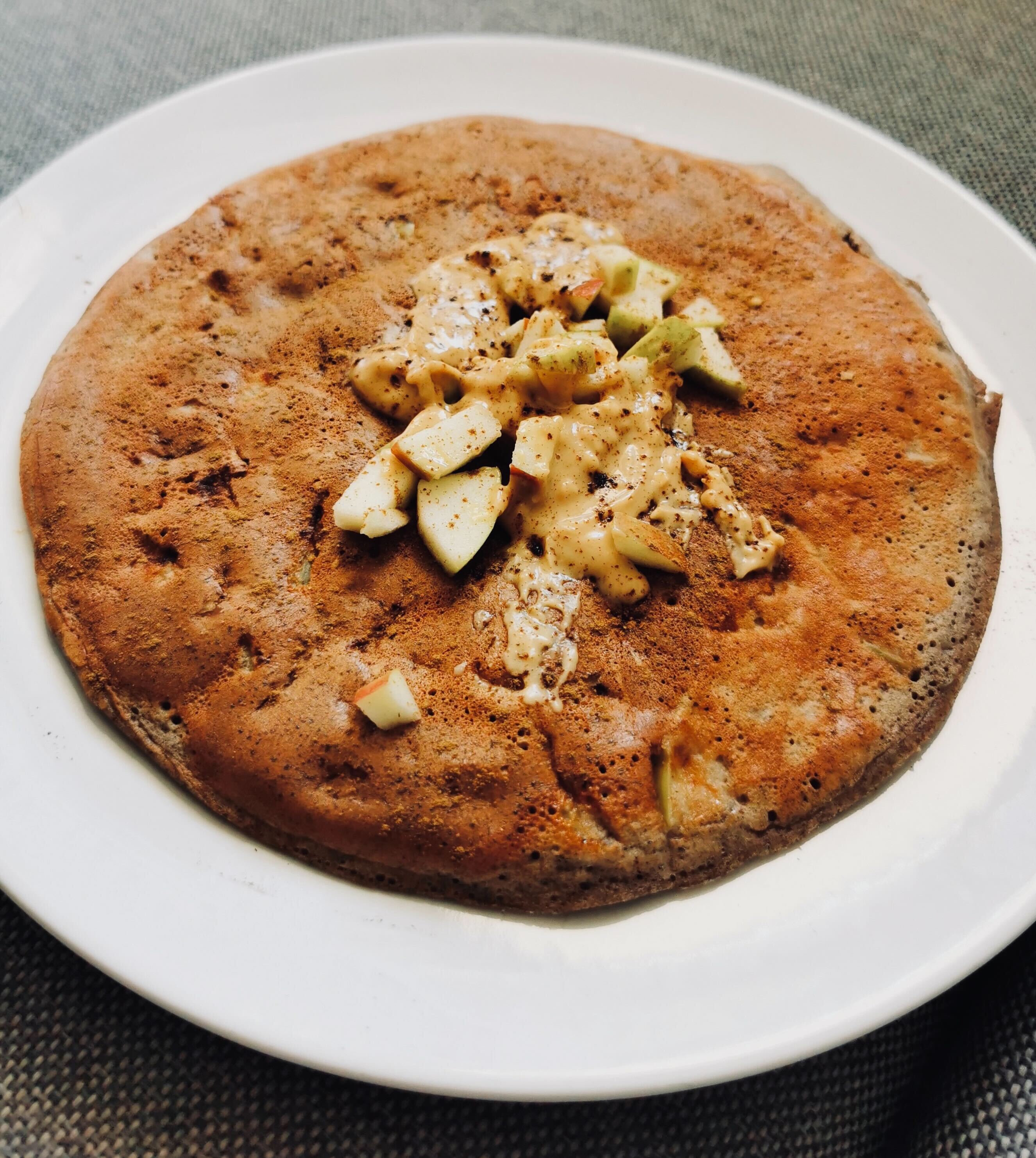
Ingredients per 1 serving:
.- egg 1 piece .
- egg white or 1 egg .
- wheat flour 30 g .
- wheat polypropylene (WPI) 25 g .
- diced apple 100 g (if you have more, don't waste - put it on top) .
- water 50-60 g .
- peanut butter 15-20 g .
- oil 2 g (or spray oil) .
- cinnamon - as desired .
- favourite sweetener (in my case erythritol 10 g) .
- optional baking powder 2 g .
Make:
.Heat the pan. Whisk the egg and egg white (or 2 eggs) to a stiff froth. Add the dry ingredients and water, mix gently. Finally add 100 g of chopped apple. Pour the mixture into the pan, fry covered for about 5 minutes on a medium heat. When the top is set and bubbles are showing, turn the omelette over and fry uncovered. Brush the finished omelette with peanut butter and add a sliced apple on top if you have any left.
.Protein noodles - a classic all over again
.120g protein, 17g fats, 140 carbohydrates, approx. 1100 kcal
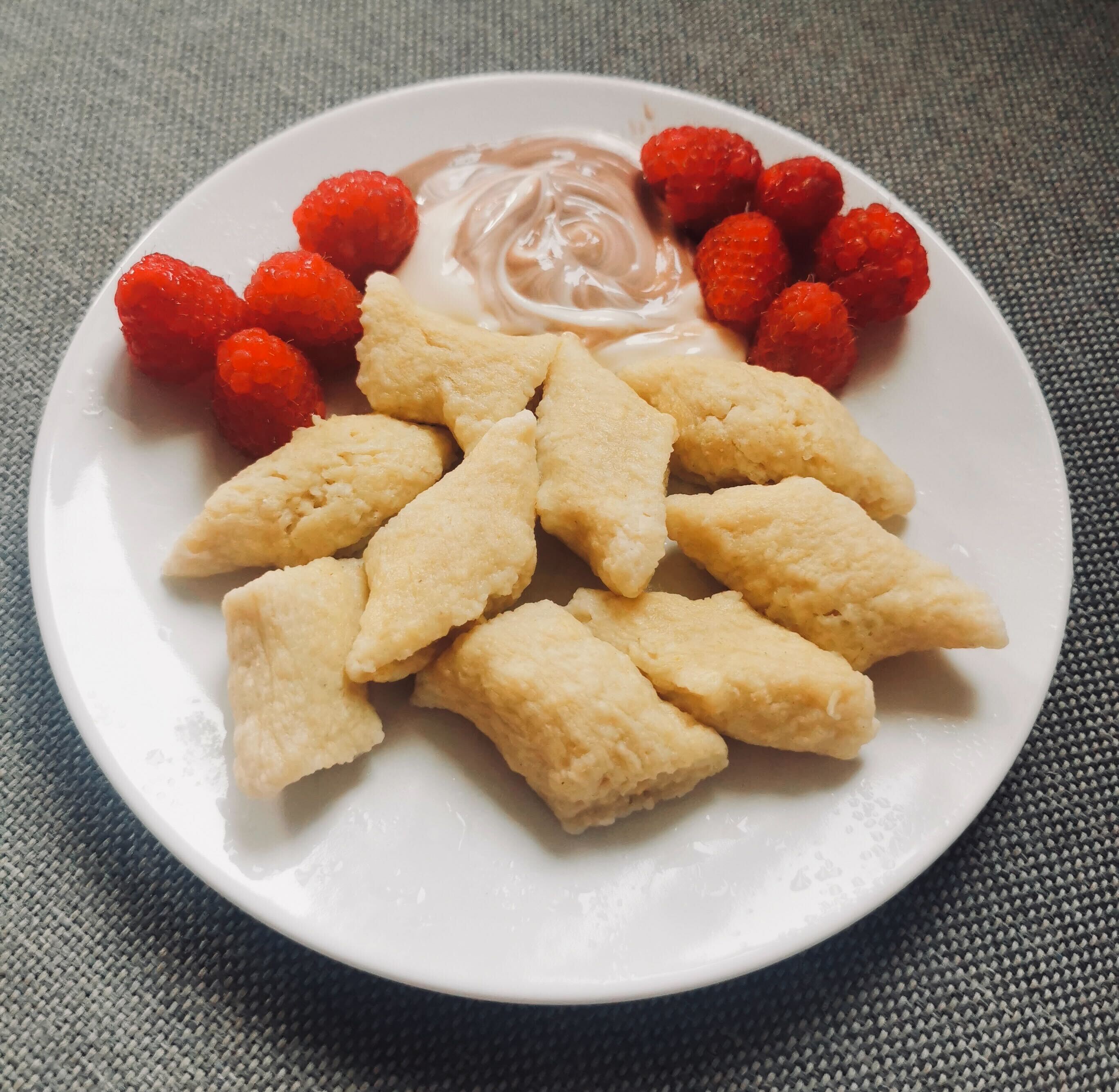
Ingredients for 2 servings of noodles alone:
- half-fat quark (can be skim, but it's harder to "stick together") 1 cube 250 g .
- wheat flour 120 g .
- oat flour 40 g .
- egg 1 piece .
- wheat protein (WPI) 60 g
- supplements as desired .
- additions as desired, in my case yoghurt and raspberries .
Make:
.Mix the curd, both flours, the egg and the protein conditioner and knead into a compact dough. Put it in the fridge for 30 minutes. Boil the water in a large pot. Form noodles from the dough and place them in the boiling water. When they rise to the surface, they are ready. Let them rest on a plate. Serve with your favourite side dishes.
.Summary
.- WPI ( Whey Protein Isolate) is a form of whey protein obtained by microfiltration.
- Whey protein isolate contains 90-95% concentrated protein, 0-3% carbohydrates and 1-3% fats per 100 g of dry matter.
- It is worth choosing WPI because it has more protein than WPC, is rapidly absorbed, has a short absorption period and is better for people with lactose intolerance.
- When compared to whey protein concentrate (WPC), isolate is more expensive and not everyone may like its aftertaste. .
- It is advisable to take care of the overall protein supply in the diet, and to consider protein isolate as a supplement to the menu.
- Whey protein concentrate is more expensive than WPC.
- People who are physically active should consume 1.6 to 2.2 g of protein per kg of body weight and about 0.4 g/kg of body weight in a meal.
FAQ
.Does protein isolate have lactose?
.Yes, protein isolate (WPI) can contain traces of lactose, so in people with intolerance to this sugar it can cause unpleasant gastrointestinal discomfort. There are lactose-free WPI protein supplements and the manufacturer usually includes this information in the product name.
Is protein isolate healthy?
.Yes, protein isolate can be a healthy addition to your diet, but as with everything, moderation and balanced intake is key. WPI will effectively replenish the protein the body needs to function properly.
However, protein isolate should be a supplement to your diet, not its main source. Look after health with a varied and nutritious diet.
What is the difference between protein isolate and protein concentrate?
.Protein isolate differs from concentrate in its production process, amount of protein, amino acids, kilocalories and price. Isolate is more purified, contains a higher concentration of protein and tends to be poorer in lactose, fat and carbohydrates, making it more digestible and less calorific than concentrate.
Is WPI protein harmful?
.According to scientific studies, whey protein isolate (WPI) is safe for most people as long as it is consumed in moderate amounts tailored to individual needs. However, people with lactose intolerance or allergies to milk proteins should avoid consuming WPI.
Is soy protein isolate harmful?
.No, soy protein isolate is not harmful. It is a rich source of complete plant protein that contains all the essential amino acids. Soy protein isolate is commonly used by people on vegetarian or vegan diets as an alternative to animal-based proteins. It is a lactose-free protein isolate, so is suitable for people with lactose intolerance.
Does WPI flavoured protein contain sugar?
.A good protein for bodybuilders or gym enthusiasts should not contain a high amount of sugars per 100g. Artificial (e.g. acesulfame K, sucralose) or natural (e.g. stevia) sweeteners are responsible for the sweet taste of flavoured supplements. Flavoured proteins are tasty, but it is better to choose natural ones, which are safer especially with long-term use.
What does it mean that WPI has a BV of 159?
.BV ( Biological Value) is, in theory, the biological value, which determines the extent to which protein supplied from food is capable of synthesising protein in the body. Egg white (BV=100) is used as a reference point. WPI has a higher value of 159. This means that whey protein isolate is, in simple terms, well absorbed and effectively provides the body with protein.
.Does protein alone have an effect?
.No, protein consumption alone does not produce results in terms of muscle mass gain and strength gains. For that, you need a stimulus, i.e. properly choreographed strength training. Consuming protein powder alone can supplement this macronutrient in the diet, which affects the functioning of the entire body (e.g. metabolic processes), but does not affect muscle growth.
How long can you take WPI?
.Protein supplements with WPI can even be taken daily to supplement your dietary protein supply. Remember that protein is best provided with food and pay attention to the composition of protein supplements. Some may contain unnecessary ingredients which, if used for a prolonged period of time, can e.g. have a negative effect on your health (e.g. sugar, artificial sweeteners and colourings).
How much does WPI cost?
.The price of WPI is around £10/100g powder. Protein nutrient prices depend on the manufacturer, flavour, weight of the pack. A good shop that offers proteins for athletes should have a wide choice not only in flavour but also in price. It is more cost-effective to buy larger protein supplements - it comes out cheaper per 100g.
Sources
.See all
.Ahmad, S. Y., Friel, J. K., & Mackay, D. S. (2020). Effect of sucralose and aspartame on glucose metabolism and gut hormones. Nutrition Reviews, 78(9), 725-746. https://doi.org/10.1093/nutrit/nuz099
Bian, X., Chi, L., Gao, B., Tu, P., Ru, H., & Lu, K. (2017). Gut Microbiome Response to Sucralose and Its Potential Role in Inducing Liver Inflammation in Mice. Frontiers in Physiology, 8, 487. https://doi.org/10.3389/fphys.2017.00487
Cengiz, F. P., Cevirgen Cemil, B., Emiroglu, N., Gulsel Bahali, A., & Onsun, N. (2017). Acne located on the trunk, whey protein supplementation: Is there any association? Health Promotion Perspectives, 7(2), 106-108. https://doi.org/10.15171/hpp.2017.19
Cribb, P. J., Williams, A. D., Carey, M. F., & Hayes, A. (2006). The effect of whey isolate and resistance training on strength, body composition, and plasma glutamine. International Journal of Sport Nutrition and Exercise Metabolism, 16(5), 494-509. https://doi.org/10.1123/ijsnem.16.5.494
Dimski, D. S. (1994). Ammonia metabolism and the urea cycle: Function and clinical implications. Journal of Veterinary Internal Medicine, 8(2), 73-78. https://doi.org/10.1111/j.1939-1676.1994.tb03201.x
Gee, T. I., Woolrich, T. J., & Smith, M. F. (2019). Effectiveness of Whey Protein Hydrolysate and Milk-Based Formulated Drinks on Recovery of Strength and Power Following Acute Resistance Exercise. Journal of Human Kinetics, 68, 193-202. https://doi.org/10.2478/hukin-2019-0066
Gorissen, S. H. M., & Witard, O. C. (2018). Characterising the muscle anabolic potential of dairy, meat and plant-based protein sources in older adults. The Proceedings of the Nutrition Society, 77(1), 20-31. https://doi.org/10.1017/S002966511700194X
Hoffman, J. R., & Falvo, M. J. (2004). Protein - Which is Best? Journal of Sports Science & Medicine, 3(3), 118-130.
Jäger, R., Kerksick, C. M., Campbell, B. I., Cribb, P. J., Wells, S. D., Skwiat, T. M., Purpura, M., Ziegenfuss, T. N., Ferrando, A. A., Arent, S. M., Smith-Ryan, A. E., Stout, J. R., Arciero, P. J., Ormsbee, M. J., Taylor, L. W., Wilborn, C. D., Kalman, D. S., Kreider, R. B., Willoughby, D. S., ... Antonio, J. (2017). International Society of Sports Nutrition Position Stand: Protein and exercise. Journal of the International Society of Sports Nutrition, 14(1), 20. https://doi.org/10.1186/s12970-017-0177-8
Jeewanthi, R. K. C., Lee, N.-K., & Paik, H.-D. (2015). Improved Functional Characteristics of Whey Protein Hydrolysates in Food Industry. Korean Journal for Food Science of Animal Resources, 35(3), 350-359. https://doi.org/10.5851/kosfa.2015.35.3.350
Kim, C.-B., Park, J.-H., Park, H.-S., Kim, H.-J., & Park, J.-J. (2023). Effects of Whey Protein Supplement on 4-Week Resistance Exercise-Induced Improvements in Muscle Mass and Isokinetic Muscular Function under Dietary Control. Nutrients, 15(4), 1003. https://doi.org/10.3390/nu15041003
Krieger, J. W., Sitren, H. S., Daniels, M. J., & Langkamp-Henken, B. (2006). Effects of variation in protein and carbohydrate intake on body mass and composition during energy restriction: A meta-regression 1. The American Journal of Clinical Nutrition, 83(2), 260-274. https://doi.org/10.1093/ajcn/83.2.260
Layman, D. K., Lönnerdal, B., & Fernstrom, J. D. (2018). Applications for α-lactalbumin in human nutrition. Nutrition Reviews, 76(6), 444-460. https://doi.org/10.1093/nutrit/nuy004
Lonnie, M., Hooker, E., Brunstrom, J. M., Corfe, B. M., Green, M. A., Watson, A. W., Williams, E. A., Stevenson, E. J., Penson, S., & Johnstone, A. M. (2018). Protein for Life: Review of Optimal Protein Intake, Sustainable Dietary Sources and the Effect on Appetite in Ageing Adults. Nutrients, 10(3), 360. https://doi.org/10.3390/nu10030360
Naclerio, F., & Larumbe-Zabala, E. (2016). Effects of Whey Protein Alone or as Part of a Multi-ingredient Formulation on Strength, Fat-Free Mass, or Lean Body Mass in Resistance-Trained Individuals: A Meta-analysis. Sports Medicine (Auckland, N.Z.), 46(1), 125–137. https://doi.org/10.1007/s40279-015-0403-y
Nguyen, D. L., & Morgan, T. (2014). Protein restriction in hepatic encephalopathy is appropriate for selected patients: A point of view. Hepatology international, 8(2), 447-451. https://doi.org/10.1007/s12072-013-9497-1
Noakes, M., Keogh, J. B., Foster, P. R., & Clifton, P. M. (2005). Effect of an energy-restricted, high-protein, low-fat diet relative to a conventional high-carbohydrate, low-fat diet on weight loss, body composition, nutritional status, and markers of cardiovascular health in obese women. The American Journal of Clinical Nutrition, 81(6), 1298-1306. https://doi.org/10.1093/ajcn/81.6.1298
Pal, S., Ellis, V., & Dhaliwal, S. (2010). Effects of whey protein isolate on body composition, lipids, insulin and glucose in overweight and obese individuals. The British Journal of Nutrition, 104(5), 716-723. https://doi.org/10.1017/S0007114510000991
Shawcross, D. L., & Wendon, J. A. (2012). The neurological manifestations of acute liver failure. Neurochemistry International, 60(7), 662-671. https://doi.org/10.1016/j.neuint.2011.10.006
Silverberg, N. B. (2012). Whey protein precipitating moderate to severe acne flares in 5 teenaged athletes. Cutis, 90(2), 70-72.
Simonart, T. (2012). Acne and whey protein supplementation among bodybuilders. Dermatology (Basel, Switzerland), 225(3), 256-258. https://doi.org/10.1159/000345102
Veldhorst, M. A. B., Nieuwenhuizen, A. G., Hochstenbach-Waelen, A., van Vught, A. J. A. H., Westerterp, K. R., Engelen, M. P. K. J., Brummer, R.-J. M., Deutz, N. E. P., & Westerterp-Plantenga, M. S. (2009). Dose-dependent satiating effect of whey relative to casein or soy. Physiology & Behavior, 96(4-5), 675-682. https://doi.org/10.1016/j.physbeh.2009.01.004
West, D. W. D., Abou Sawan, S., Mazzulla, M., Williamson, E., & Moore, D. R. (2017). Whey Protein Supplementation Enhances Whole Body Protein Metabolism and Performance Recovery after Resistance Exercise: A Double-Blind Crossover Study. Nutrients, 9(7), 735. https://doi.org/10.3390/nu9070735
Wu, G. (2016). Dietary protein intake and human health. Food & Function, 7(3), 1251-1265. https://doi.org/10.1039/c5fo01530h
Zamil, D. H., Perez-Sanchez, A., & Katta, R. (2020). Acne related to dietary supplements. Dermatology Online Journal, 26(8), 13030/qt9rp7t2p2.
Editorials
Meet the team


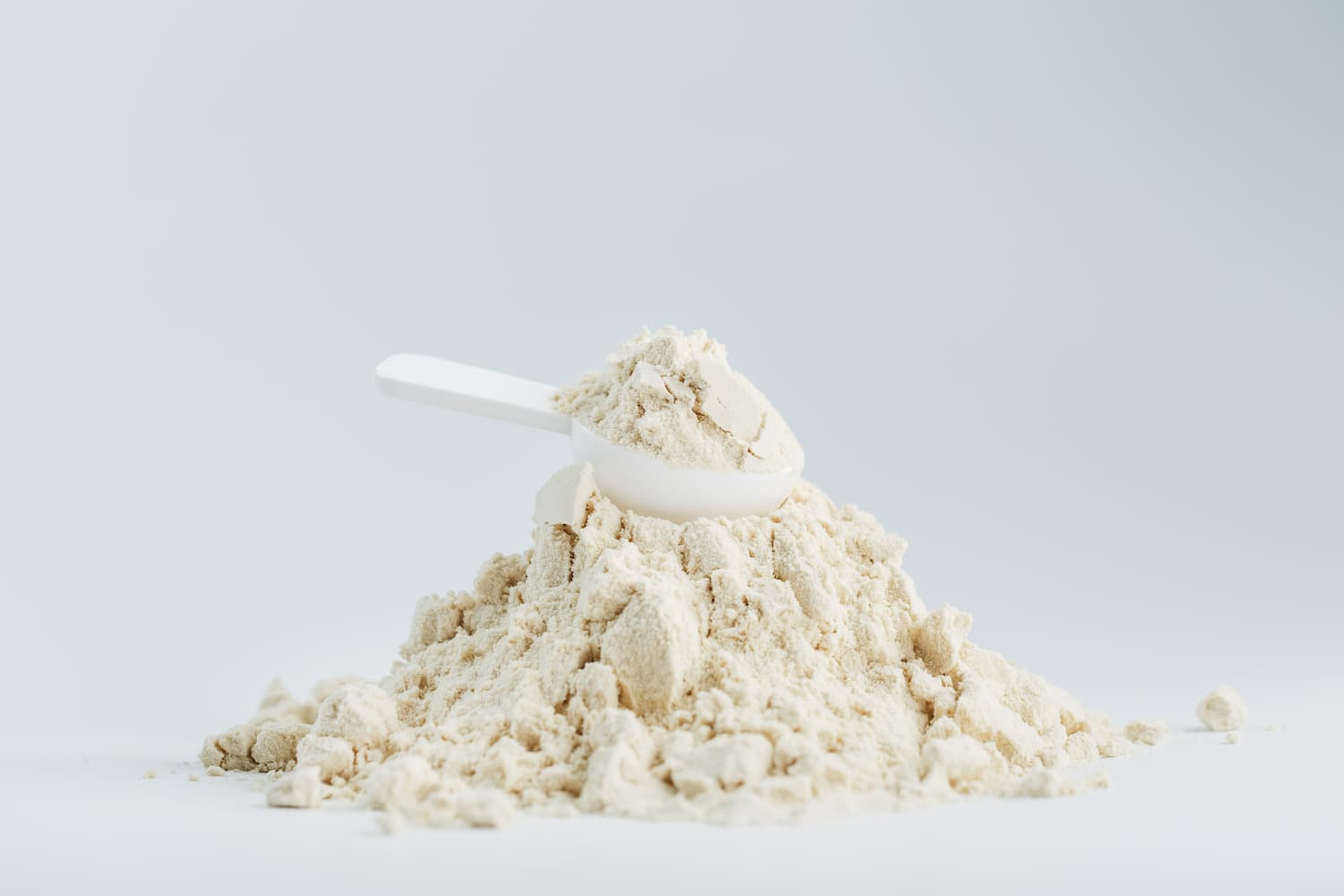
Vegan protein supplements add protein to the diets of athletes and non-athletes alike.
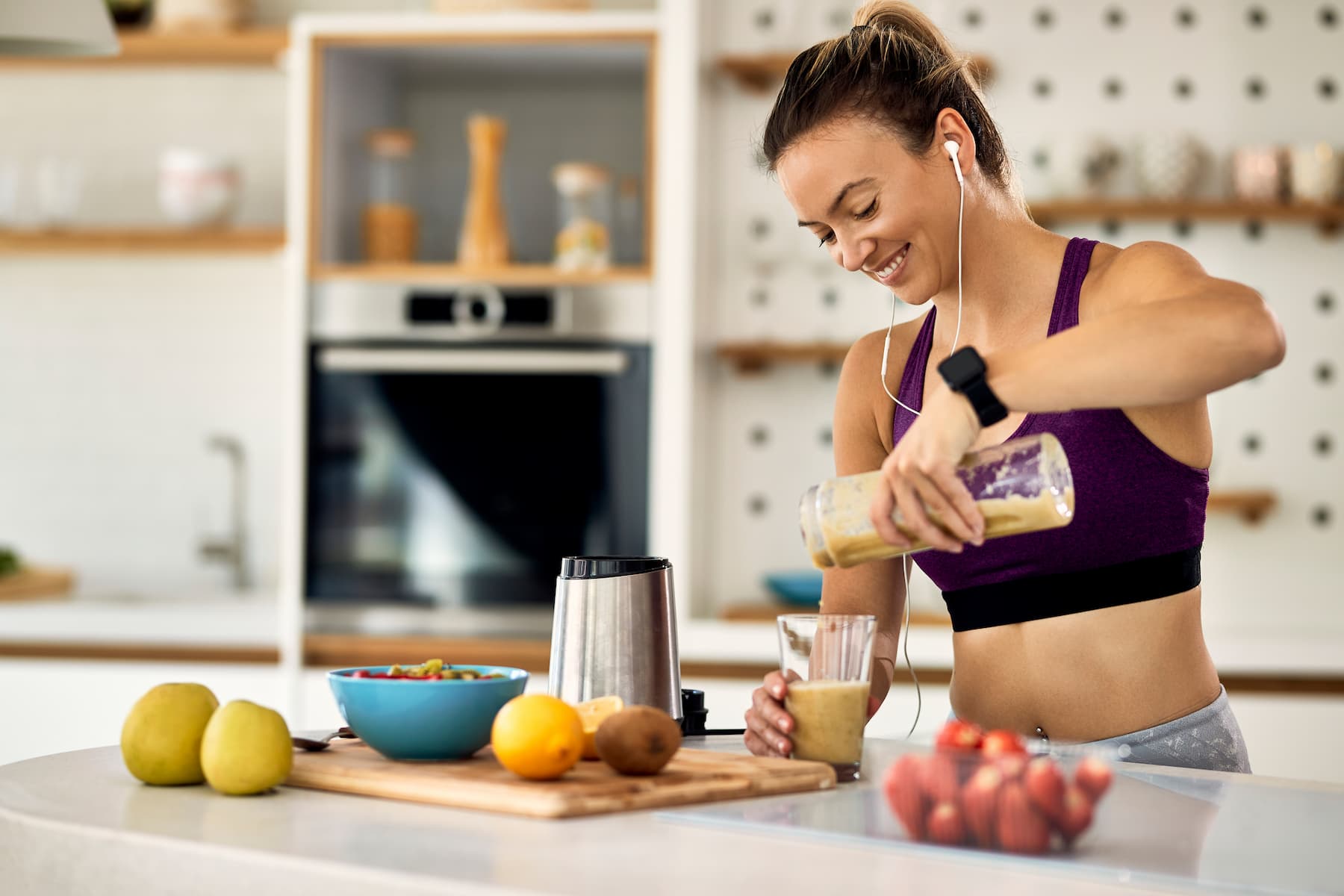
Look after the protein in your diet whether you are on a weight gain, weight reduction or weight maintenance.
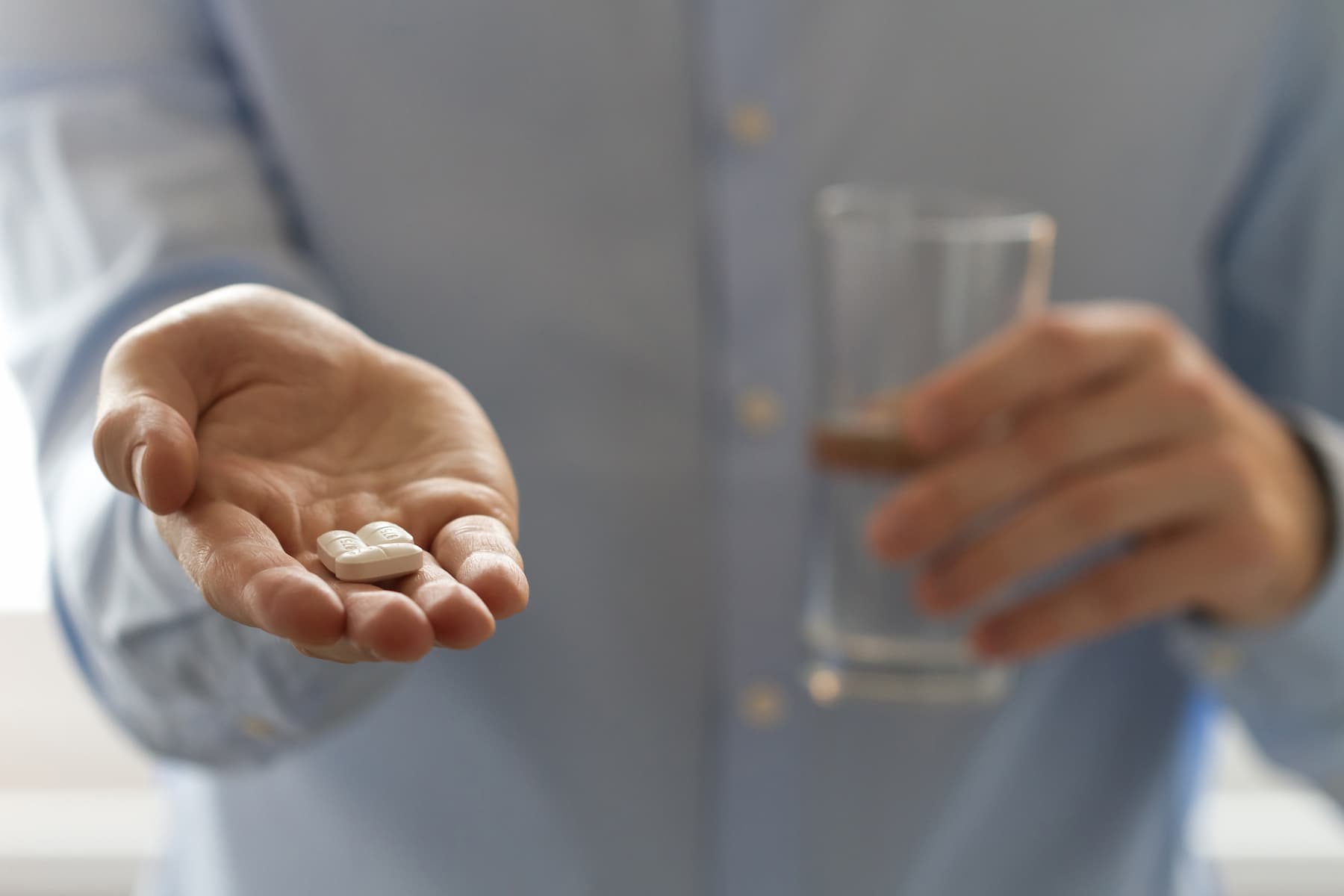
Methionine is a little-known amino acid that is responsible for many functions in the body.



